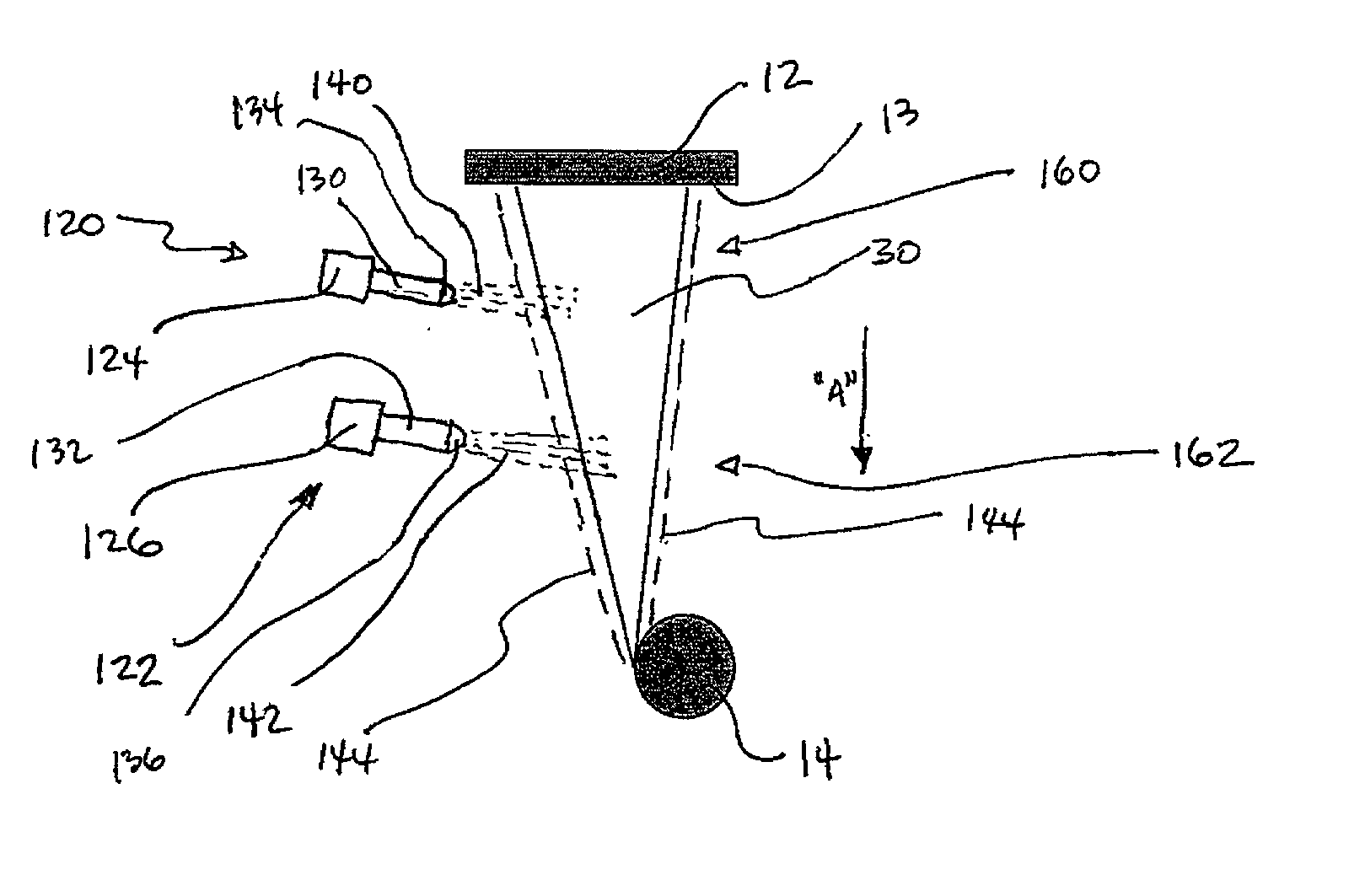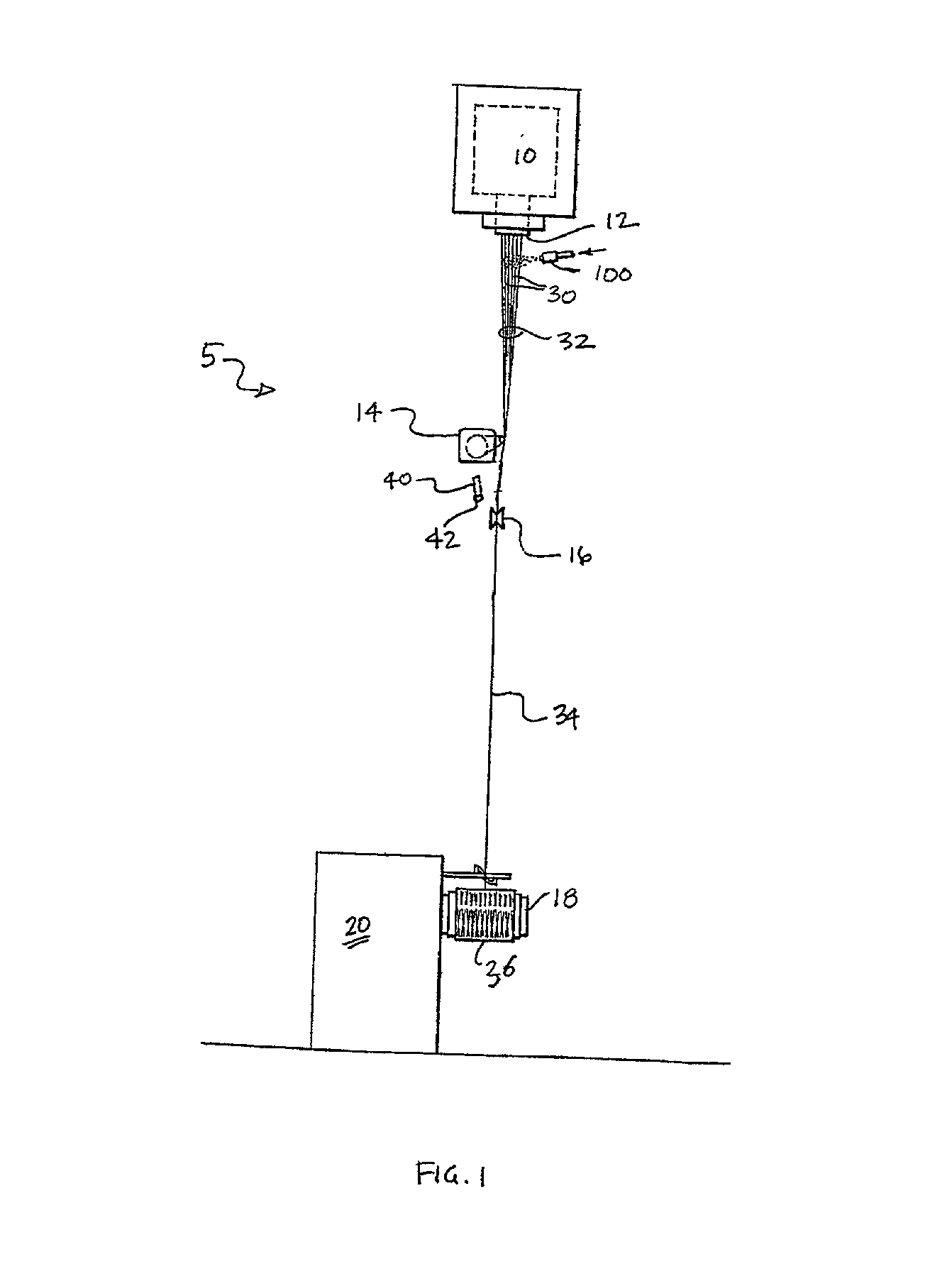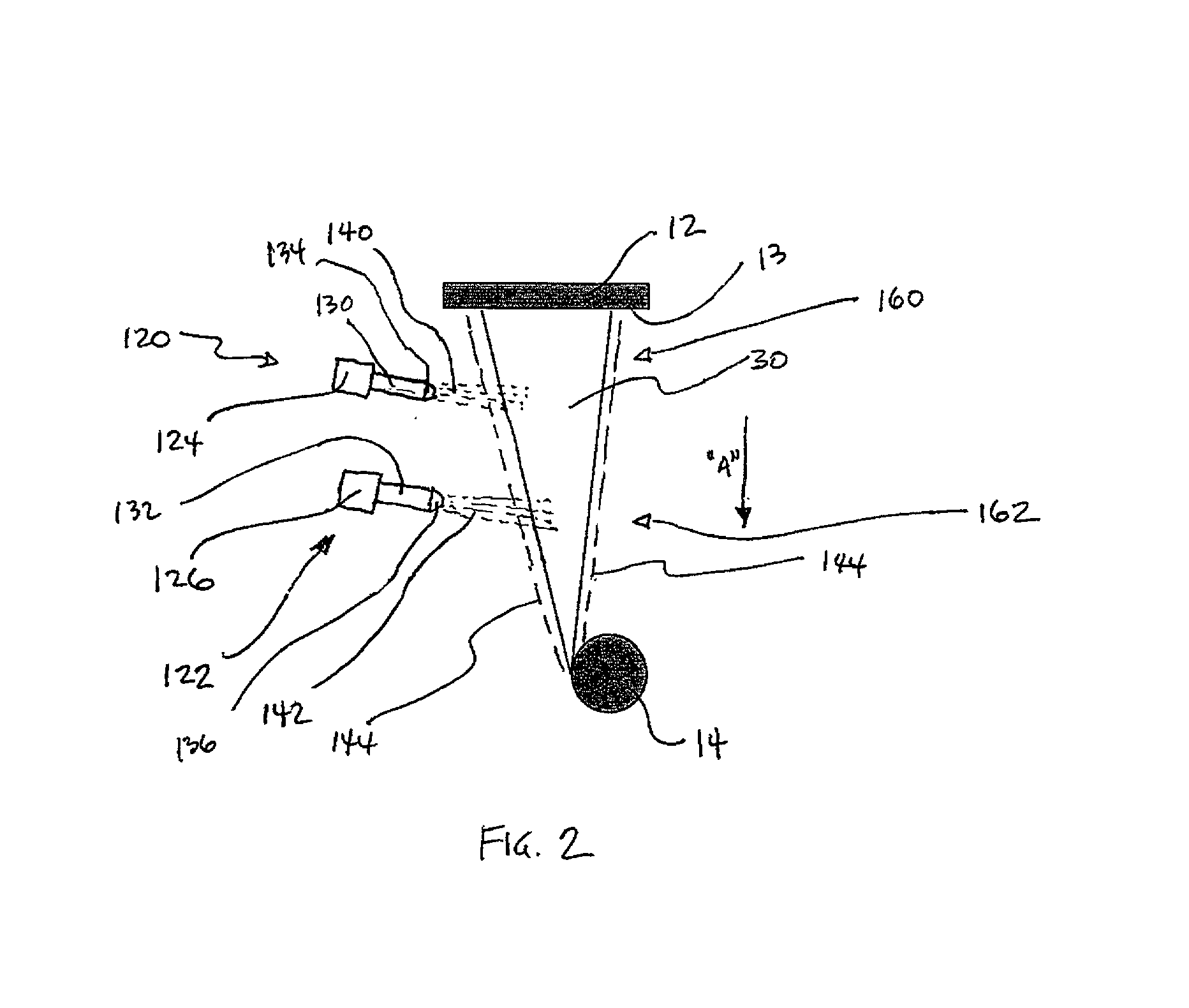Methods and apparatus for the cooling of filaments in a filament forming process
a technology of filament forming and cooling fluid, which is applied in the direction of lighting and heating apparatus, manufacturing tools, furnaces, etc., can solve the problems of filament breakage, filament temperature, process interruption, etc., and achieve the effect of enhancing the cooling of filaments, improving the distribution of cooling fluid particles, and increasing the momentum
- Summary
- Abstract
- Description
- Claims
- Application Information
AI Technical Summary
Benefits of technology
Problems solved by technology
Method used
Image
Examples
Embodiment Construction
[0019] A strand is typically formed from a group of filaments or fibers that are attenuated from a source of fiber-forming material. For glass strands, molten glass is delivered to a bushing that is electrically heated to maintain the glass in a molten state. The glass is pulled or attenuated as filaments from orifices in a bottom plate of the bushing.
[0020] The current trend is to operate bushings at higher temperatures and higher throughputs. While the goal is to produce more glass, these conditions result in undesirable side effects at the size applicator, such as filament breaks and process interruptions. Higher filament temperatures also increase the likelihood of degradation of material.
[0021] Conventional filament forming systems utilize pre-pad water sprays to cool filaments and provide lubrication to reduce contact point breaks. Since filaments tend to bundle together at the size applicator contact location, pre-pad sprays are used to enhance uniform lubrication.
[0022] The ...
PUM
| Property | Measurement | Unit |
|---|---|---|
| angle | aaaaa | aaaaa |
| distance | aaaaa | aaaaa |
| distance | aaaaa | aaaaa |
Abstract
Description
Claims
Application Information
 Login to View More
Login to View More - R&D
- Intellectual Property
- Life Sciences
- Materials
- Tech Scout
- Unparalleled Data Quality
- Higher Quality Content
- 60% Fewer Hallucinations
Browse by: Latest US Patents, China's latest patents, Technical Efficacy Thesaurus, Application Domain, Technology Topic, Popular Technical Reports.
© 2025 PatSnap. All rights reserved.Legal|Privacy policy|Modern Slavery Act Transparency Statement|Sitemap|About US| Contact US: help@patsnap.com



